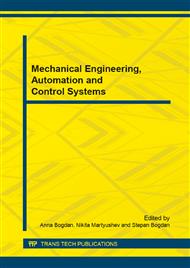p.359
p.365
p.372
p.378
p.382
p.389
p.394
p.402
p.408
An Improvement of the Concept Design Analysis Method by the Use of the Avoidance Function
Abstract:
Avoiding disasters due to resonance is a major concern in construction projects such as buildings, bridges and pipelines. This paper uses the Concept Design Analysis (CODA) method that is capable of supporting the described Value-Driven Design (VDD) methodology. While VDD promotes the use of a system wide ‘value’ function during conceptual design, the CODA method allows mapping customer needs into engineering characteristics in order to calculate a single normalized design metric. The CODA method employs three different merit functions: maximizing (more is better), minimizing (less is better), and optimizing (target is better). This paper proposes a new merit function called avoidance function that allows excluding a range of engineering characteristics, e.g. avoiding a range of resonant frequencies. An example of a simple CODA model for a bicycle wheel design selection with the proposed the avoidance function is presented.
Info:
Periodical:
Pages:
382-388
Citation:
Online since:
April 2015
Authors:
Price:
Сopyright:
© 2015 Trans Tech Publications Ltd. All Rights Reserved
Share:
Citation:


